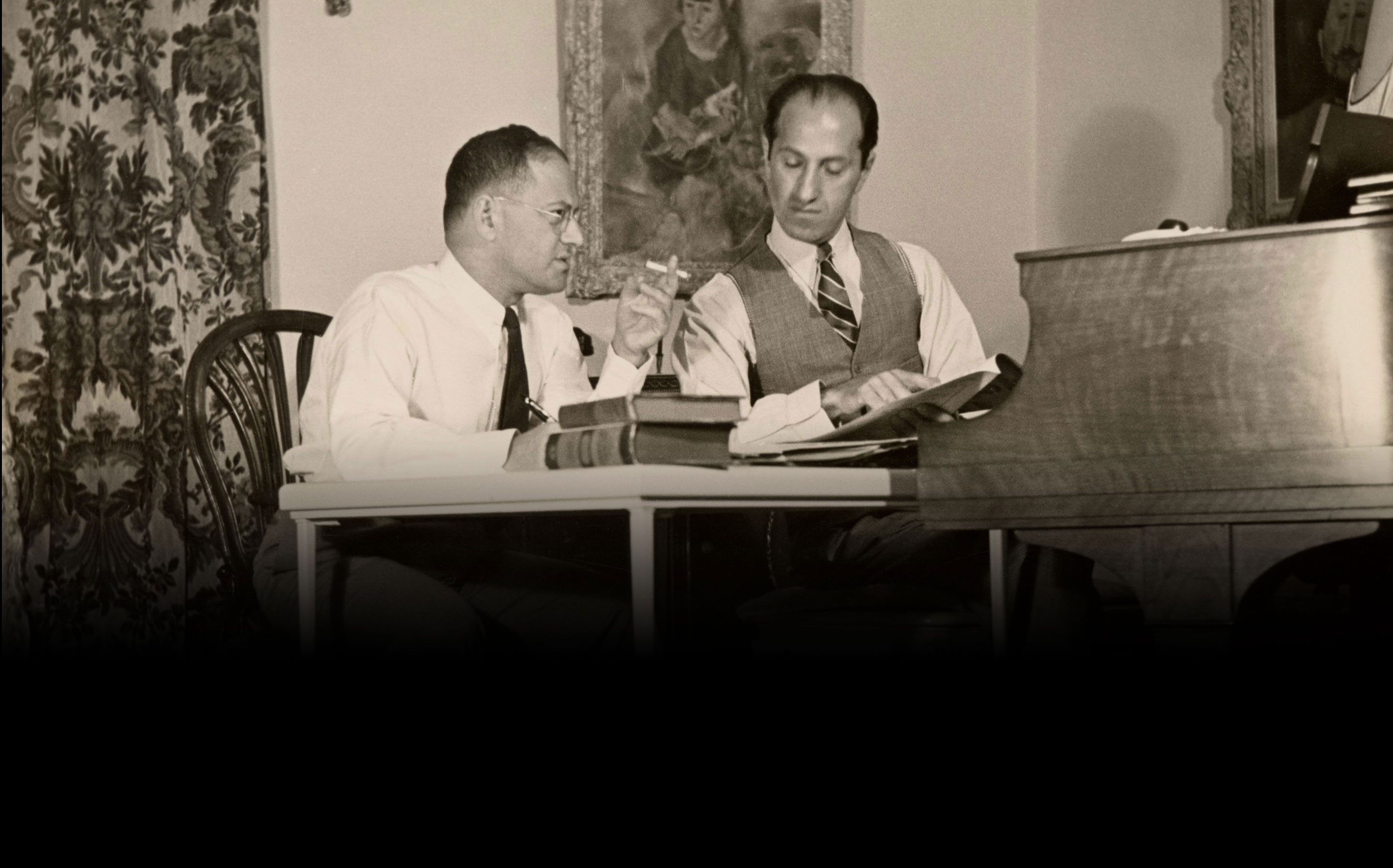The Real American Folk Song (is a Rag)!
In the ragtime-infatuated New York of 1918, George and Ira Gershwin’s lives seemed to be pulling in different directions. It only took one song to prove that a partnership between the two brothers would spell success for their musical careers.
—–
Sarah Sisk is an undergraduate English major at U-M’s College of Literature, Science and the Arts. She is working with the Gershwin Initiative as an undergraduate research assistant in the university’s UROP program.
The First Collaboration:
The Story of “The Real American Folk Song”
Most histories of George and Ira Gershwin’s popular songs begin with George’s instant hit “Swanee,” with the two later working together to create dozens of hits like “I Got Rhythm,” “Embraceable You,” and “Love is Here to Stay” throughout an overwhelmingly successful collaborative career. But the young brothers’ first dabbles in show business often go overlooked. George was drawn early to a future in music. In 1914 he had already taken up a job as a piano plugger for the Remick and Company publishing firm, playing the latest published popular songs for an audience of prospective buyers on the fabled Tin Pan Alley. Even more impressive, he published a handful of songs of his own while still a teenager. Ira, the more introverted elder brother, took a little longer to find his feet as a lyricist, working in his father’s Turkish baths while George was putting down roots in musical theater.
Ira penned his earliest lyrics in the summer of 1918, a chorus that began with “The great American folk song is a rag.” In Ira’s own words, it was “Not good, not bad. Passable with a good rag refrain.” But he also wrote that “Geo. liked it,” and his interested brother supplied a melody; together they worked Ira’s fledgling idea into a proper song. The result, “The Real American Folk Song (is a Rag),” was introduced to the stage by singer Nora Bayes in the three-act musical comedy Ladies First (1918). To hear its first public performance at the show’s auditions, Ira took off work and caught a train to New Jersey. He got nearly catastrophically lost on his way, and arrived at the theater just in time. “Folk Song” was, however, eventually dropped from the show during its run in New York, and this early gem fell out of use for four decades, remaining unrecorded and unpublished until 1959 when it was recorded by Ella Fitzgerald (Ella Fitzgerald Sings the George and Ira Gershwin Song Book). Though it brought neither brother any real profit or professional recognition, the song marked an important milestone on several levels: it was the brothers’ first professional collaboration, Ira Gershwin’s first contribution to American lyric theater, and the brothers’ first song to make it to the Broadway stage.
In the early Jazz Age, ragtime, with its upbeat and intricate syncopations, infatuated the American musical community. George’s inherent genius was magnificently suited to its creative and complex rhythmic style. In “Folk Song,” Ira’s lyrical contribution was the perfect complement to George’s tune, and his words overlay the music with internal rhymes and syllabic emphases that enhance the song’s toe-tapping appeal. The lyrics themselves are a delightful rumination on the unconventional and universally popular style of ragtime, the syncopated “sort-of-meter” that would infuse all of George’s following compositions. The brothers’ artistic synthesis was natural, and the seamless collaboration that produced this early song was a small but promising augur of their shared stardom.
The lyrics to “The Real American Folk Song (is a Rag)” can be found here.
Further Reading:
Feinstein, Michael. The Gershwins and Me: A Personal History in Twelve Songs. New York: Simon & Schuster, 2012. Print.
Gilbert, Steven E. The Music of Gershwin. New Haven: Yale University, 1995. Print.
Jablonski, Edward, and Lawrence D. Stewart. The Gershwin Years: George and Ira. New York: Da Capo Press, 1996. Print.
Norton, Richard C. A Chronology of American Musical Theater. Oxford: Oxford University Press, 2002. Print.
Pollack, Howard. George Gershwin: His Life and Work. Los Angeles: University of California Press, 2006. Print.
Rosenberg, Deena. Fascinating Rhythm: The Collaboration of George and Ira Gershwin. 4th ed. Ann Arbor: The University of Michigan Press, 2000. Print.

This is a topic that is near to my heart… Best wishes!
Where are your contact details though?|
Greetings from Los angeles! I’m bored to death at work so I decided to browse your site on my iphone during lunch break.
I really like the knowledge you provide here and can’t
wait to take a look when I get home. I’m shocked at how quick
your blog loaded on my phone .. I’m not even using WIFI, just 3G ..
Anyways, fantastic site!|
A quick question: Where are the Ira Gershwin comments from? Is there an available reference?